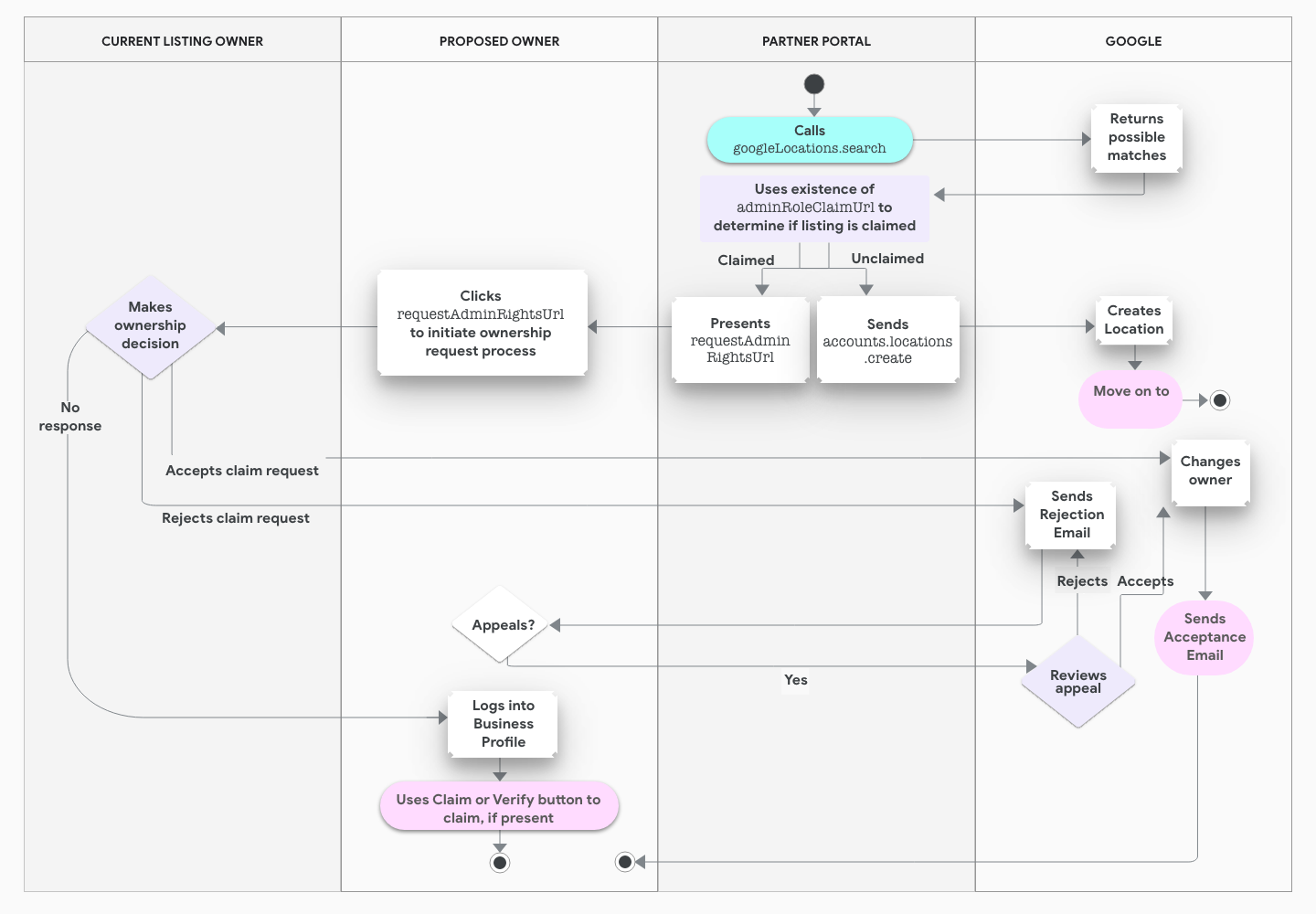Interfejs GoogleLocations API pozwala sprawdzić z wyprzedzeniem, czy dana lokalizacja została już zgłoszona w Profilu Firmy. Dzięki temu, jeśli lokalizacja została już zgłoszona, możesz od razu poprosić o dostęp do niej. Jeśli zarządzasz kontami z weryfikacją zbiorczą, możesz dokładniej wybrać potencjalne dopasowania z wyprzedzeniem i uniknąć tworzenia duplikatów lokalizacji.
Punkt końcowy interfejsu API zwraca adres URL, który wskazuje, czy lokalizacja ma już zgłoszonego właściciela. Jeśli został on zgłoszony, ten sam adres URL umożliwia rozpoczęcie procesu żądania dostępu.
Na poniższym obrazku znajdziesz omówienie procesu uzyskiwania praw własności do lokalizacji.

Aby korzystać z interfejsu API GoogleLocations, wykonaj te czynności:
- Pozyskiwanie danych o lokalizacji od sprzedawcy.
-
Zadzwoń do punktu końcowego
googleLocations.search. Podaj dane o lokalizacji w treści połączenia. Możesz też podać go w postaci ciągu zapytania, podobnie jak użytkownik wpisuje w wyszukiwarce lub Mapach. Na przykład: „Starbucks 5th ave NYC”.Interfejs API zwraca listę potencjalnie pasujących lokalizacji oraz informacje o każdej z nich, takie jak
locationNamei adres. - Wybierz lokalizację odpowiadającą Twojej lokalizacji. Jeśli nie ma żadnych dopasowań, zadzwoń pod numer
accounts.locations.createi przejdź do kroku 5. -
W zależności od stanu
requestAdminRightsUrlw odpowiedzi wykonaj te czynności:- Jeśli istnieje
requestAdminRightsUrl, oznacza to, że inny użytkownik jest właścicielem wizytówki. Przekieruj sprzedawcę do adresu URL, aby rozpocząć proces przesyłania prośby o dostęp do istniejącej lokalizacji w Profilu Firmy i uzyskania do niej praw własności. - Jeśli
requestAdminRightsUrlnie istnieje, zadzwoń pod numeraccounts.locations.createi utwórz nową stronę, która zostanie zweryfikowana później.
- Jeśli istnieje
- Jeśli w ramach tego procesu utworzysz nowe strony, możesz użyć interfejsów API do weryfikacji, aby rozpocząć weryfikację tych stron. Więcej informacji znajdziesz w artykule Zarządzanie weryfikacją.
